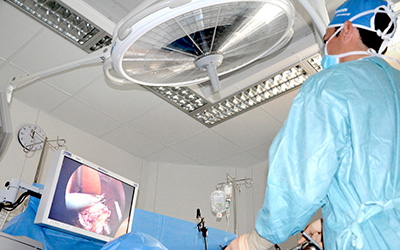
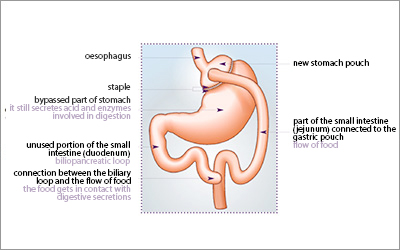
SURGERY: 1 HOUR
HOSPITALIZATION: 4 TO 5 DAYS
SICK LEAVE: 1 MONTH
Bypass is the oldest bariatric surgery procedure.
Although it is a difficult and risky procedure in conventional surgery, it has become a benchmark in bariatric surgery since the development of laparscopy in the 1990s.
This procedure involves food restriction and intestinal malabsorption. Their combination ensures that weight loss will be sustainable over time.
The two most common bypasses are:
The Roux-en-Y gastric bypass (mini by-pass), which requires to perform two anastomoses as well as closing gaps between intestinal loops to minimize risks of occlusion. In theory, the Roux-en-Y bypass is reversible. We have been promoting this method since 2005 and have performed more than 3 000 procedures to this day.
The Omega Loop Bypass (image) only requires one anastomosis and presents no risk of bowel obstruction. The Omega Loop bypass is easily reversible.
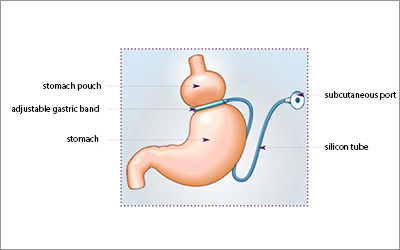
SURGERY : 1 HOUR
NO HOSPITALIZATION (OUTPATIENT)
SICK LEAVE : 1 MONTH
This is a simple procedure that can be performed as an outpatient surgery.
It is purely restrictive ("I am eating less therefore I am losing weight") and it is easily reversible.
Gastric banding can still be advised in some cases, but due to a high weight-regain rate (in our experience, more than 80%), it is less and less recommended.
The procedure leaves no visible scars and is performed in our surgery center. (see one trocart)
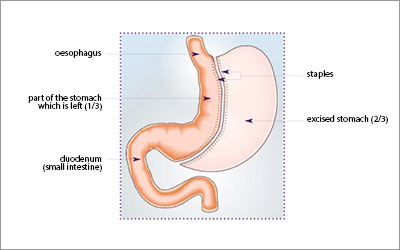
SURGERY: 1 HOUR
HOSPITALIZATION: 4 TO 5 DAYS
SICK LEAVE: 1 MONTH
Since it is the most recent bariatric procedure there is still little data available.
It is an irreversible procedure (gastrectomy) which was initially performed as the first step of the "duodenal switch" surgery.
It is purely restrictive.
As opposed to bypass surgery, the risk of weight regain after a sleeve gastrectomy is higher.
This may be due to:
- Snacking
- The pouch stretching
- The intestine synthesizing ghrelin (the hunger hormone)
In case of failure or significant reflux, the sleeve gastrectomy can be converted to a bypass (see rescue surgery)
In case of complications following a bypass surgery, sleeve surgery or gastric banding, surgical solutions may be considered:
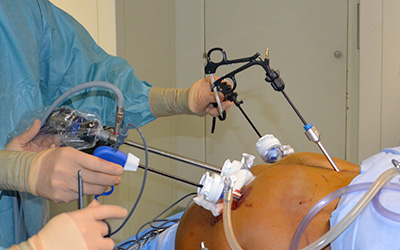
Laparoscopy is a technique that allows to perform surgery without opening the stomach. A fiber optic is inserted through the belly button. The abdomen is then insufflated with gas, which allows for a panoramic view. Finally, instruments are inserted into the abdomen through small incisions.
Advantages :
- Very little pain caused by the procedure
- Short hospital stay (less than 5 days)
- Reduced risk of infection and bleeding
- Reduced risk of incisional hernia
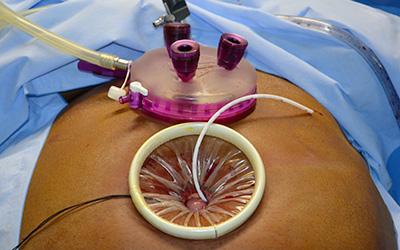
The one-port (also known as single-port laparoscopy or one-port access) is a recent technique in laparoscopic surgery thanks to which the surgeon operates through a single umbilical port.
Aesthetically, this technique is undeniably beneficial since it leaves no visible scars.
We usually use this procedure for Sleeve gastrectomy, Gastric banding, Gallbladder removal and Bypasses (less frequently)
